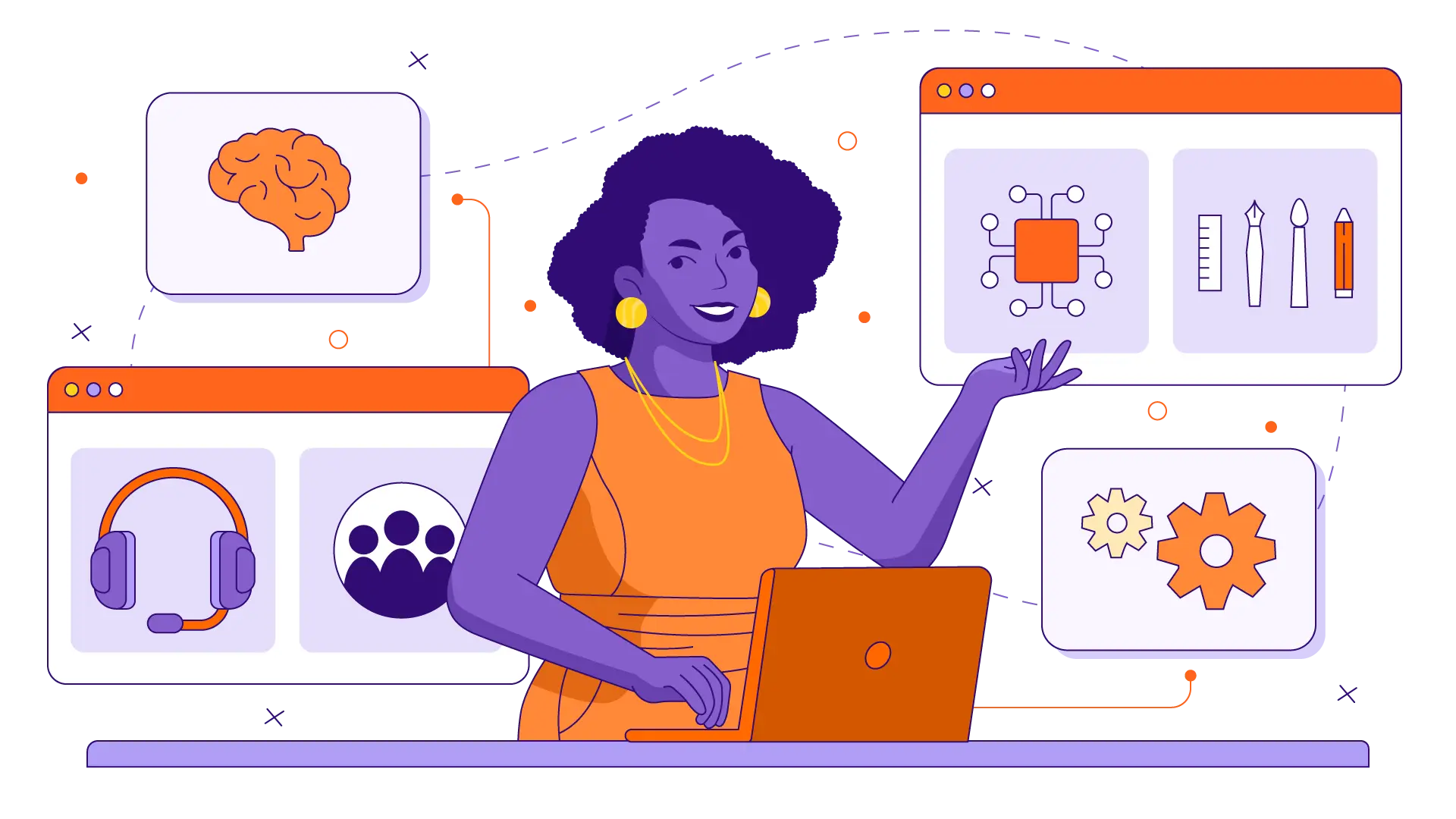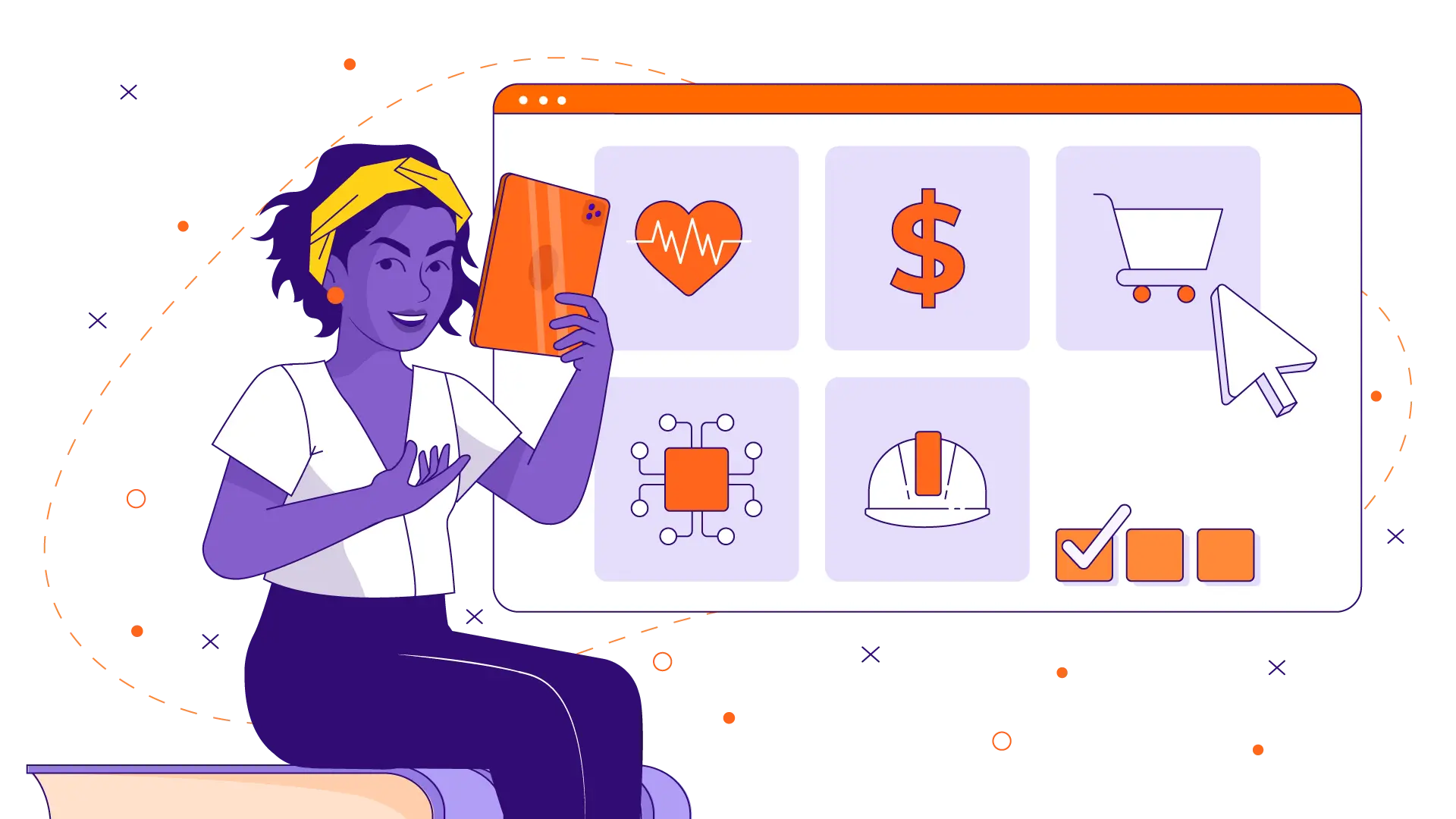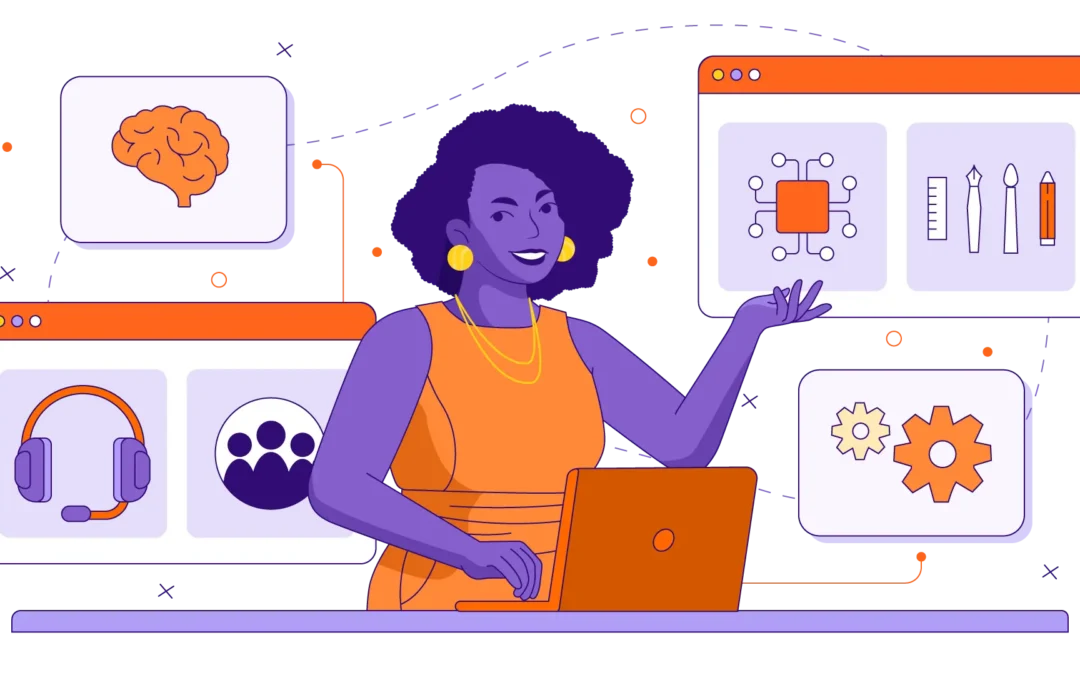
Competency-Based Training: The Ultimate Guide to Building a Skilled Workforce
Businesses need employees who can perform their jobs effectively, not just those who have completed training. Competency-Based Training (CBT) ensures that employees develop the real-world skills necessary for success. This guide will walk you through the essentials of CBT, from understanding competencies to designing and delivering effective training programs.
What is Competency-Based Training?
Competency-Based Training (CBT) is a training approach that focuses on developing the specific skills employees need to perform their jobs successfully. Unlike traditional training, which often emphasizes theoretical knowledge, CBT ensures learners can demonstrate real-world skills before moving forward.
Businesses use CBT to build a workforce that is skilled, confident, and ready to meet job demands. Employees learn at their own pace, mastering one competency before moving on to the next. This results in a highly competent team with practical expertise.
Before developing eLearning, define what you want to achieve. Are you improving onboarding, compliance, or product training? Clear objectives ensure your training aligns with business outcomes.
What is a “Competency” Exactly?
A competency is a measurable skill or ability that is essential for successfully performing a specific job function. These competencies can be divided into two main categories: technical competencies and behavioral competencies.
Technical competencies refer to job-specific skills that involve the use of tools, technology, or methodologies. For instance, a customer service representative maTo effectively support customer interactions, it is essential to proficiently operate a Customer Relationship Management (CRM) system, handle customer complaints skillfully, and utilize data analysis tools to assess customer feedback. For example, an employee might use a CRM system to track customer interactions and identify trends in customer satisfaction levels.
Behavioral competencies include the interpersonal skills and attributes that facilitate effective interaction and collaboration with others. For instance, a project manager should demonstrate strong leadership abilities by inspiring team members through regular motivational meetings. They may also engage in strategic planning by setting clear objectives that align with the organization’s goals, such as launching a new product.
Implementing risk management strategies might involve conducting a thorough analysis of potential risks in a project timeline to proactively address any challenges that could arise.
By focusing on these competencies, organizations can evaluate whether employees can apply their knowledge in practical scenarios, ensuring they are equipped to meet both customer and organizational needs effectively.enarios, ensuring that they are not only familiar with theoretical concepts but also adept at executing the necessary tasks in real-world situations. This comprehensive understanding of competencies ultimately contributes to improved performance and increased effectiveness within teams and across the organization.

Examples of Competency-Based Training
Competency-Based Training (CBT) is transforming the way organizations develop their workforce by focusing on real-world skills rather than passive learning. Leading companies across industries—healthcare, finance, technology, and manufacturing—are using CBT to boost employee performance and job readiness. From hands-on medical simulations to interactive software training, these examples showcase how top organizations implement competency-based learning for measurable results.
Performance-Based Standards
CBT relies on performance-based standards to define success. Instead of vague learning objectives, competency-based programs set clear expectations for what learners should be able to do after training.
For example:
- Instead of saying, “Understand how to handle customer complaints,” a performance-based standard would say, “Resolve at least 90% of customer complaints within 10 minutes while maintaining customer satisfaction scores above 4.5/5.”
By focusing on measurable outcomes, companies ensure their training translates into real-world performance improvements.
Training is Not the Objective
Most organizations make a critical mistake—they focus on training as the goal instead of performance. Training should never be about just completing courses. It should be about ensuring employees can perform their jobs effectively.
CBT flips the traditional model. Instead of tracking course completion, it tracks actual competency development. Employees only move forward when they can successfully demonstrate a skill, ensuring they are truly job-ready.

Competency-Based Training Examples
CBT can be applied in various industries and job roles. Here are some real-world examples:
Healthcare:
- Competency: Administering an IV correctly.
- Training Method: Simulation-based learning where nurses practice on a virtual patient.
- Evaluation: A live assessment where the nurse demonstrates correct IV insertion.
Sales:
- Competency: Conducting a needs-based sales conversation.
- Training Method: Role-playing exercises with a sales manager.
- Evaluation: Selling to a mock customer and receiving feedback based on performance.
Manufacturing:
- Competency: Operating a specific machine safely.
- Training Method: Hands-on, step-by-step guidance with an experienced operator.
- Evaluation: Running the machine independently while following all safety protocols.
Software Training:
- Competency: Navigating a new CRM software.
- Training Method: Interactive tutorials with real-time practice.
- Evaluation: Completing a set of assigned tasks within the system without errors.
By focusing on real-world application, CBT ensures employees are job-ready rather than just trained.
👉 Check out our award-winning portfolio and explore the endless possibilities of interactive learning 👈
Deliver Competency-Based Training to Your Team—Right to Their Smartphones
Modern workforces increasingly demand flexible training solutions that can adapt to the varying schedules and needs of employees. One of the most effective methods for delivering computer-based training (CBT) is through mobile learning, which allows individuals to engage with training materials on their devices wherever they are.
Benefits of Mobile CBT Solutions
With mobile CBT solutions, employees can:
Access Training Anytime, Anywhere:
Employees can learn on their own schedules, whether it’s during a commute, between meetings, or during breaks. This accessibility leads to increased participation and a more self-directed learning experience.
Engage with Microlearning Modules:
Short, focused learning segments allow employees to absorb information in manageable portions. This approach fits seamlessly into busy schedules and helps enhance retention and understanding.
Receive Real-Time Feedback:
Employees can track their progress instantly and receive feedback that helps them improve right away. This immediacy fosters a culture of continuous learning and skill enhancement.
Boost Engagement and Retention:
Companies investing in mobile CBT solutions typically report higher employee engagement levels, better retention rates, and superior skill mastery.
Ninja Tropic specializes in designing engaging and mobile-friendly learning experiences that employees prefer, thereby enhancing overall job performance and satisfaction.
Practical Tips for Implementing Mobile CBT Solutions:
Choose the Right Platform:
Select a mobile learning platform that is user-friendly and accessible on various devices. Ensure it supports different content formats, such as videos, quizzes, and interactive modules, to meet diverse learning preferences.
Incorporate Microlearning Strategies:
Break down training content into bite-sized modules that can be easily consumed in a short amount of time. This makes learning less overwhelming and allows employees to engage with the material at their convenience.
Provide Opportunities for Collaboration:
Encourage employees to interact with one another through discussion forums, group challenges, or peer assessments. This builds a sense of community and reinforces learning through shared experiences.
Regularly Update Content:
Keep the training materials fresh and relevant by regularly updating them based on employee feedback and industry trends. Incorporating gamification elements can also enhance the learning experience and keep employees motivated.
By implementing these strategies, companies can create an adaptive learning environment that meets the needs of a modern workforce, ultimately leading to improved performance and employee satisfaction.
CBT FAQ
Q: How is Competency-Based Training Different from Traditional Training?
A:
- Traditional Training: Time-based, focuses on completing courses, often theoretical.
- CBT: Performance-based, focuses on skill mastery, practical application.
With CBT, learners must demonstrate competency before progressing, ensuring real-world job readiness.
Q: What Are the Steps in Creating Competency-Based Training?
A: Costs vary based on interactivity, media, and length. Basic courses start at a few thousand dollars, while highly interactive courses can be significantly higher.
Identify Key Competencies
It is essential to define the specific skills that employees need for their roles within the organization. By identifying these key competencies, you can ensure that all training and development efforts are aligned with the required capabilities for success in each position
Develop Performance Standards
Establishing measurable benchmarks for success is crucial in guiding employee performance. Clear performance standards provide a reference point for both employees and managers, helping to maintain consistency and clarity regarding expectations.
Design Practical Learning Experiences
To maximize the effectiveness of training, it is important to incorporate practical learning experiences. Using simulations, role-plays, and interactive training methods can engage employees and enhance their understanding of how to apply their skills in real-life situations.
Deliver the Training
Effective training delivery is key to employee development. Utilizing eLearning, microlearning, and mobile-friendly solutions ensures that training is accessible and convenient, allowing employees to learn at their own pace and according to their schedules.
Assess Competency
To ensure that employees have truly mastered the skills required for their roles, it is important to assess their competency through real-world tasks. This hands-on approach helps validate their abilities and provides insights into areas that may need further development.
Provide Feedback and Reinforcement
Offering constructive feedback and reinforcement is vital for employee growth. Providing coaching and additional resources can support ongoing improvement, helping employees to refine their skills and enhance their performance continuously.
Measure Results and Optimize
Continuously tracking performance data is essential to assess the effectiveness of training programs. By analyzing results, organizations can identify areas for improvement and optimize their training efforts over time, ensuring they meet the evolving needs of the workforce.
Q: Can Competency-Based Training Be Applied to All Industries?
A: Yes! CBT works in any industry where skill mastery is required, including:
- Healthcare (nurse training, medical procedures)
- Finance (compliance, fraud detection skills)
- Retail (customer service, sales techniques)
- Technology (coding, software navigation)
- Manufacturing (equipment operation, safety protocols)
Q: How Do I Measure the Success of a Competency-Based Training Program?
A: To assess the effectiveness of Cognitive Behavioral Training (CBT), it’s important to track the following metrics:
Employee Performance:
Measure employee performance both before and after the training to identify skill improvement.
Productivity Improvements:
Compare productivity levels to see if there is a notable increase post-training.
Error and Complaint Reduction:
Monitor the frequency of errors or customer complaints before and after training to evaluate impact.
Customer Satisfaction:
Use surveys or feedback tools to gauge customer satisfaction levels after implementing training.
Time-to-Competency:
Track how quickly employees can demonstrate mastery of new skills or processes learned during training.
👉 Practical Tips:
Set Clear Goals:
Define specific, measurable goals for each training program to streamline evaluation.
Use Pre- and Post-Training Assessments:
Implement assessments before and after training to quantitatively measure knowledge or skill gains.
Collect Qualitative Feedback:
Gather feedback from employees on their training experiences and perceived effectiveness.
Utilize Performance Metrics Software:
Leverage technology to track performance and productivity metrics efficiently.
Regularly Review and Adjust Training Programs:
Based on your findings, continually refine your training initiatives to meet changing organizational needs.
Companies that prioritize measurable business outcomes, rather than solely focusing on course completion rates, tend to experience the greatest return on investment (ROI) from their training programs.
Final Thoughts
Competency-Based Training is a game-changer for companies that want skilled, confident employees who can perform their jobs effectively. Unlike traditional training, CBT ensures learners master real-world skills before progressing.
By designing engaging, practical training experiences, organizations can boost employee performance, reduce skill gaps, and drive better business outcomes.
Want to build a high-performing workforce? Start implementing competency-based training today!
DOWNLOAD YOUR KEY TO KNOWLEDGE
Access Valuable Resources to Fuel Your Learning Journey


